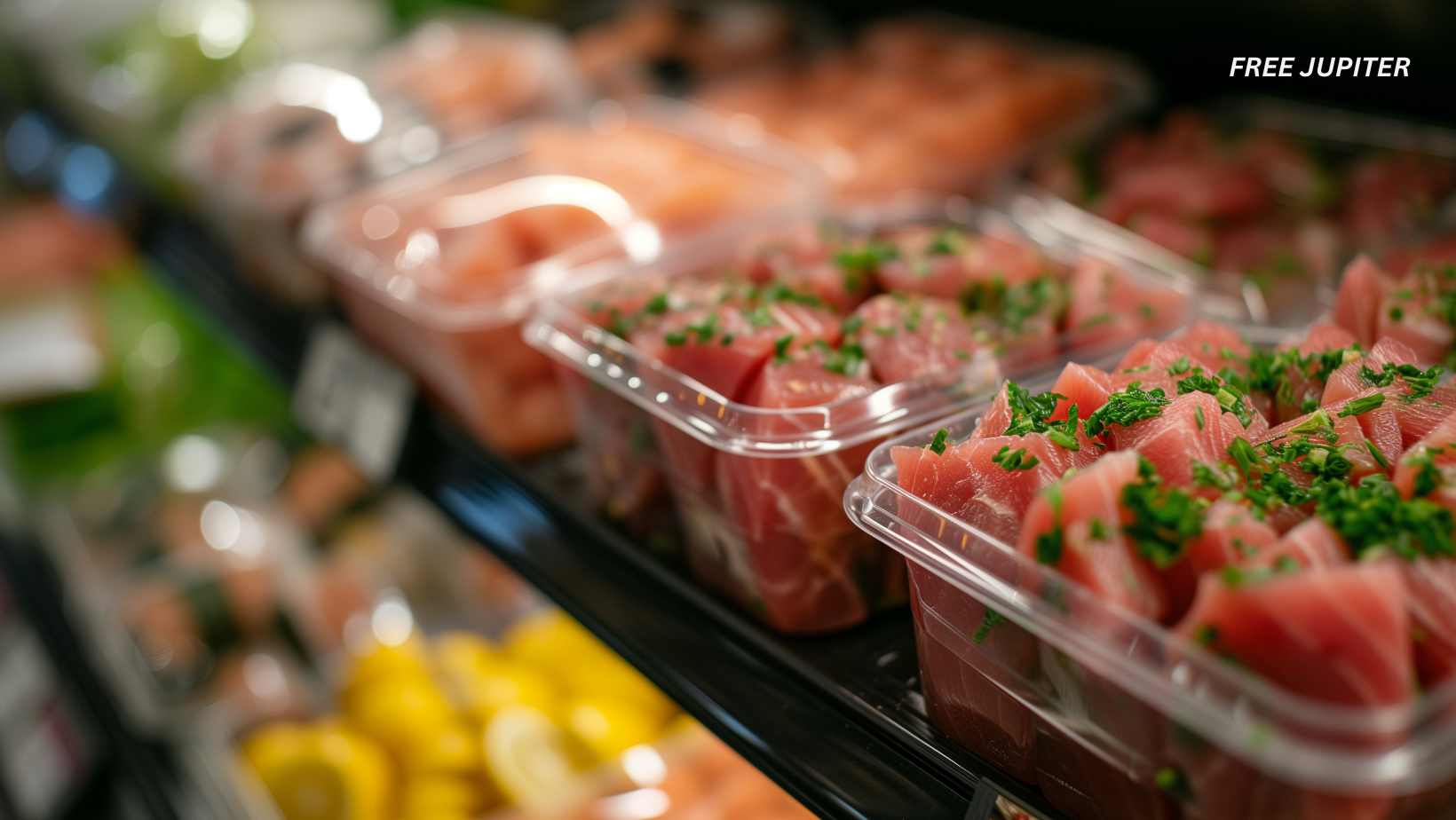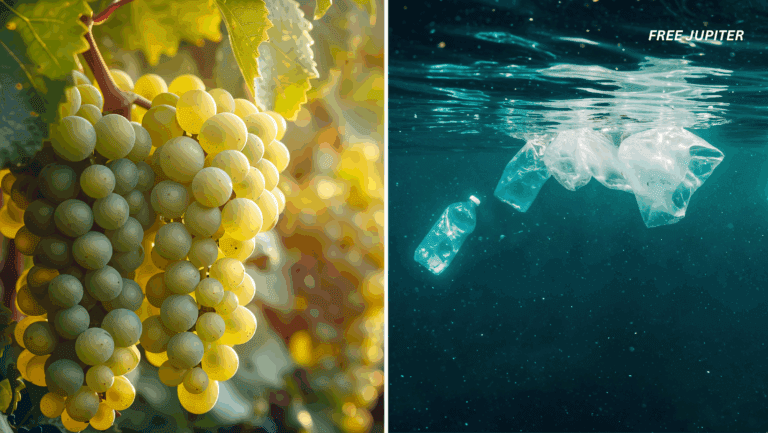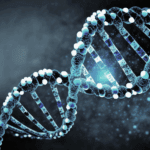Imagine seasoning your lunch not with salt or pepper—but with a pinch of plastic. That may sound absurd, but according to a sweeping new scientific review, it’s not far from the truth. The culprits? Your everyday food packaging, kitchenware, and even your own cooking habits.
Researchers analyzed over 100 scientific studies and found an alarming trend: simply using plastic the way it’s meant to be used—like opening a drink bottle, microwaving leftovers in a container, or slicing fruit on a plastic cutting board—can release tiny particles of plastic directly into your food. These fragments are so small, you can’t see them—but your body might notice.
Welcome to the not-so-fantastical world of micro- and nanoplastics, or MNPs. They’re everywhere. And yes, that includes your dinner plate.
What Exactly Are Microplastics and Nanoplastics?
Let’s get to the nitty-gritty—quite literally. Microplastics and nanoplastics are exactly what they sound like: tiny fragments of plastic. But just how tiny are we talking?
- Microplastics are smaller than 5 millimeters, which is about the size of a sesame seed or the tip of a pencil eraser.
- Nanoplastics are far, far smaller—so small they’re invisible to the naked eye, often measured in nanometers (that’s a billionth of a meter). They’re so minuscule that they may even slip through the walls of human cells.
These particles don’t start out small. They come from bigger plastic items that have been worn down, scratched, heated, exposed to sunlight, or simply aged over time. Imagine a plastic bag flapping around in the sun for months or a water bottle you’ve reused a few dozen times. Instead of fully breaking down, the plastic fractures into smaller and smaller pieces, creating these microscopic tagalongs that float into our surroundings—and, unfortunately, into us.
But here’s the kicker: they don’t just vanish. These fragments persist, drifting into ecosystems, sinking into soil, and hitching rides in water, wind, and food.
Read more: The Cheese You Eat Before Bed Is Giving You Nightmares: New Study
Where Are These Plastics Hiding? (Spoiler: Almost Everywhere)
If you’re imagining microplastics as something only found in polluted oceans or dirty beaches, brace yourself. They’ve been discovered in some shockingly intimate places:
- In bottled and tap water
- In the air we breathe
- In dust inside our homes
- In fresh produce and seafood
- Even in human blood, lungs, breast milk, and placentas
One particularly eye-opening discovery? Microplastics have been found inside the organs of unborn animals, suggesting they can pass through protective biological barriers like the placenta. That means these plastics don’t just hang out in the environment—they can enter living systems, travel through tissues, and potentially stay there.
It’s a bit like hosting a dinner guest who never leaves—and no one even invited them.
Why Should We Care?
Now, you might be wondering: Okay, they’re small and everywhere—but are they actually harmful? That’s the million-dollar question. The science is still catching up, but early research is raising red flags.
What we do know:
- These particles can carry toxins. Plastics can attract and absorb harmful chemicals like pesticides or industrial pollutants. When we ingest these particles, we might also be ingesting those chemicals.
- They can cause inflammation or stress to cells, especially if they’re small enough to enter tissues and organs.
- Some microplastics may mimic hormones, potentially disrupting the body’s delicate endocrine system.
- Studies in animals have linked microplastic exposure to issues in reproduction, immunity, and development.
But here’s the truth: while the presence of microplastics in the human body is now undeniable, the long-term health impacts are still largely unknown. Scientists are scrambling to understand the consequences—but the early signs suggest that this isn’t something to ignore.
Read more: The Ideal Amount of Sunshine You Need For Maximum Vitamin D Levels: Experts
How Your Packaging Is Adding Plastic to Your Plate
The review, led by biologist Lisa Zimmermann from the Food Packaging Forum in Switzerland, took a close look at 103 previous studies examining plastic in food. The researchers didn’t just skim the surface—they compiled 600 detailed records on different plastic-based food containers, wrappers, and utensils.
The result? A staggering 96% of those records reported the presence of micro- or nanoplastics in or on the food.
“Even when plastic food containers are used exactly as they’re supposed to be, they can release tiny plastic particles into your food,” Zimmermann explained.
And it’s not limited to the obvious offenders like plastic forks and Styrofoam trays. Here’s what else was shedding plastic:
- Glass bottles with plastic seals
- Plastic-lined pizza boxes
- Disposable coffee cups with a thin plastic lining
- Plastic tea bags (yes, the ones that melt slightly in hot water)
- Microwave-ready containers
- Plastic baby bottles
- Reusable plastic dishes, especially when heated or scrubbed
Essentially, anything involving plastic and food contact is fair game for microplastic contamination.
Why Reusable Plastic May Be Worse Than Single-Use
Ironically, that “eco-friendly” reusable bowl or cup might not be doing your health any favors. Several studies noted that reusable plastic kitchenware, such as melamine bowls and Tupperware, released more plastic over time—especially with repeated washing, heating, and physical wear.
Each wash and microwave cycle creates tiny scratches and micro-cracks, accelerating the release of plastic fragments. So while you’re helping the environment by avoiding disposables, you might be trading off by exposing yourself to more microplastics.
Ultra-Processed Foods: A Plasticky Surprise
Zimmermann’s team also found a strong link between ultra-processed foods and microplastic contamination. Why? It’s not necessarily the food ingredients themselves—it’s the production process.
Foods that go through more manufacturing steps encounter more plastic machinery, pipes, and packaging. Every touchpoint increases the chance of microplastics sneaking into the final product.
This means your frozen dinner, protein bar, or pre-packaged snack might be bringing a little extra “texture” to the table—just not the kind you want.
Why This Matters: What’s the Risk to Humans?
Here’s the tricky part. Scientists know these plastic particles are in our food, drinks, and bodies—but they don’t yet know exactly what they’re doing to us.
Still, early evidence is cause for concern.
One recent study found that people with microplastics in their carotid arteries had a higher risk of heart attack and stroke deaths. Other studies in animals show plastic buildup in livers, kidneys, intestines, and even brains. Some particles can even trigger inflammation or mimic hormones, potentially disrupting normal body functions.
This isn’t to say plastic is the root of all evil—but it’s enough of a red flag that many researchers are calling for urgent action.
Where Do We Go From Here?
Zimmermann and her team aren’t calling for a total plastic ban (let’s face it—modern life relies heavily on it). But they are urging a more cautious approach.
They recommend:
- Reducing plastic usage in food packaging
- Encouraging innovation in safer materials
- Improving labeling transparency so consumers know what their food touches
- Funding more studies to figure out what microplastics do once inside the human body
In the meantime, they suggest a simple, sensible mindset: “Better safe than sorry.” Choosing alternatives—like glass, stainless steel, or biodegradable packaging—could reduce your exposure without requiring a lifestyle overhaul.
“There’s still so much we don’t know,” the researchers wrote. “But a precautionary approach—especially around what touches our food—is the wise move.”
Read more: A New Ozempic Side Effect Has Just Been Discovered—And It’s Turning Lives Upside Down
🌎 Final Thoughts: Eating Plastic Is Not Part of a Balanced Diet
We’ve gotten used to plastic being part of our lives. But now it seems it’s sneaking into our bodies, too. From the packaging that cradles your sandwich to the bowl you reheat your soup in, microplastics are hitching a ride into your system.
It’s not about alarmism—it’s about awareness. The more we learn, the clearer it becomes that our convenience comes at a cost, one that’s not just environmental but possibly biological.
In a world overflowing with plastic, the least we can do is ask: Is there a better way to store, serve, and enjoy our food—without inviting plastic to dinner?










